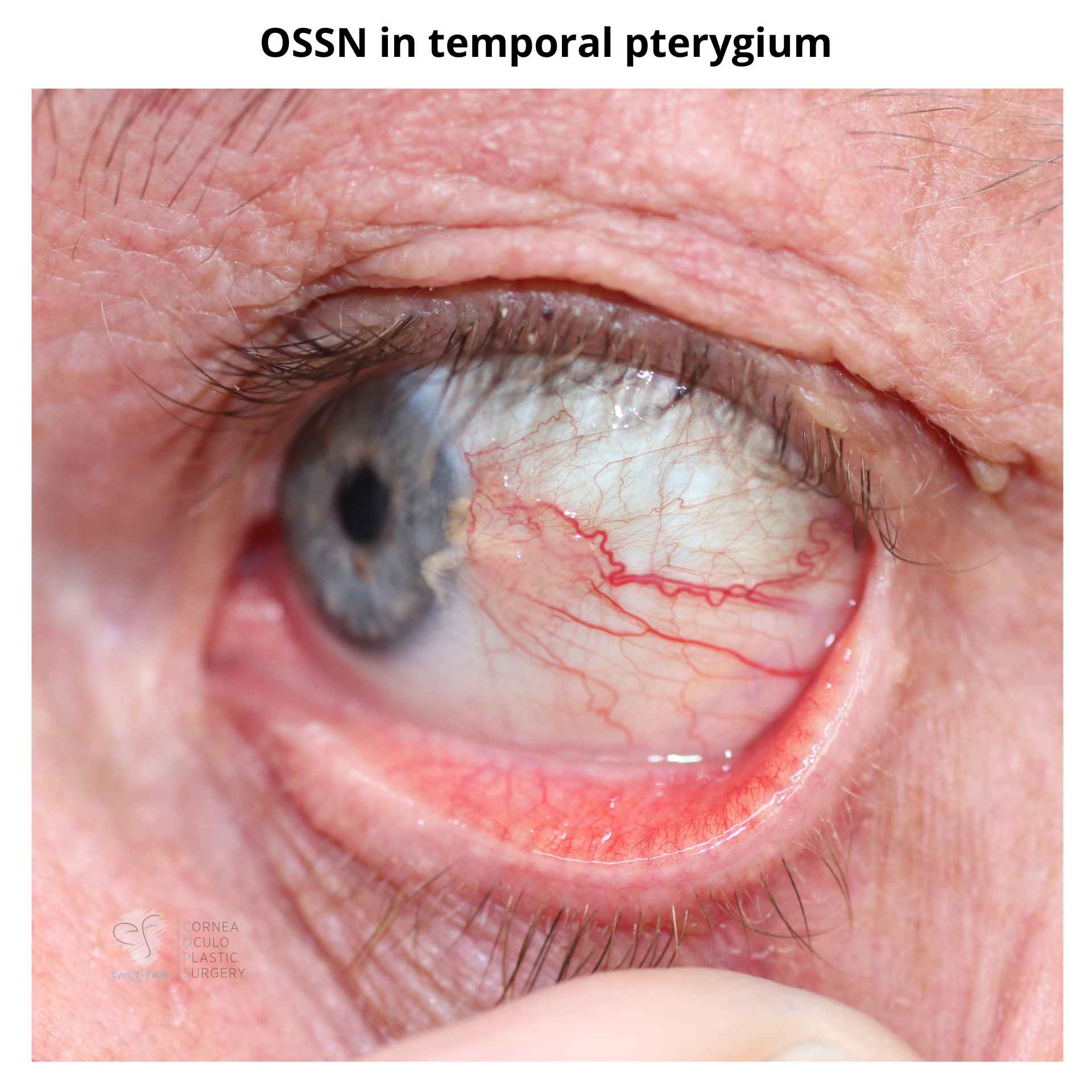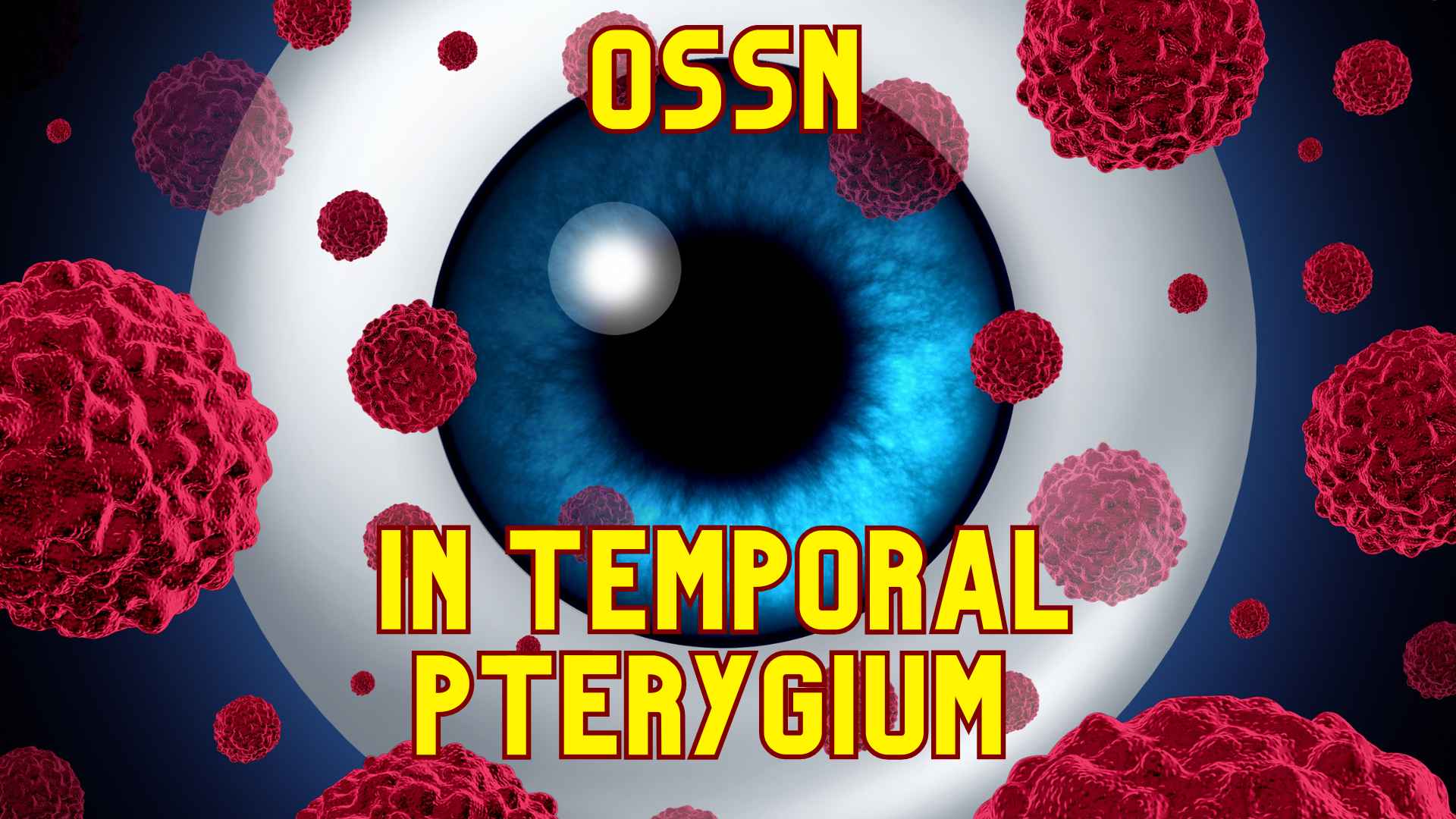This patient was sent in with an atypical lesion within his temporal pterygium.
This photo was taken with a hand-held camera, rather than a slit lamp camera, but look at the plaque like lesion over the pterygium.
This is an OSSN, which I will first shrink, then excise, with chemotherapy then surgery using the PERFECT technique.

OSSN
Ocular Surface Squamous Neoplasia (OSSN) is a medical condition that affects the surface of the eye, specifically the conjunctiva. It is characterized by the abnormal growth of squamous cells on the ocular surface, which can lead to pre-cancerous or cancerous lesions. OSSN primarily occurs in the conjunctiva, which is the clear, thin membrane that covers the white part of the eye and lines the inside of the eyelids.
Causes: The exact cause of OSSN is not always clear, but it is often associated with long-term exposure to ultraviolet (UV) light from the sun, human papillomavirus (HPV) infection, and other environmental factors. People with a history of chronic eye irritation or inflammation may be at a higher risk.
Types: OSSN can manifest in various forms, including:
- Conjunctival intraepithelial neoplasia (CIN): This is a pre-cancerous condition where abnormal squamous cells appear on the surface of the conjunctiva but have not invaded deeper tissues.
- Carcinoma in situ (CIS): CIS is a more advanced pre-cancerous stage where abnormal cells have not invaded beyond the conjunctival epithelium.
- Invasive squamous cell carcinoma: This is the most advanced and potentially cancerous stage of OSSN, where abnormal cells have penetrated deeper into the eye tissues.
Symptoms: Common symptoms of OSSN may include:
- Persistent redness in the eye
- Irritation, discomfort, or a feeling of a foreign body in the eye
- Chronic tearing
- Changes in vision
- A visible growth or mass on the eye’s surface
- Photophobia (sensitivity to light)
Diagnosis: Diagnosis of OSSN typically involves a comprehensive eye examination, including slit-lamp microscopy and sometimes imaging tests. A biopsy of the affected tissue is often necessary to confirm the presence of abnormal cells and determine the stage of the condition.
Treatment: The treatment of OSSN depends on the stage and extent of the neoplasia. Treatment options may include:
- Topical medications: In the early stages (CIN and CIS), topical chemotherapy or immunotherapy medications may be prescribed to eliminate the abnormal cells.
- Surgery: In cases of invasive squamous cell carcinoma or when topical treatments are ineffective, surgical excision of the affected tissue may be necessary.
- Cryotherapy: Freezing of the abnormal tissue with liquid nitrogen can be used to remove small lesions.
- Radiation therapy: This may be considered in some cases, particularly when surgery is not possible.
With early detection and appropriate treatment, the prognosis for OSSN is generally good. However, if left untreated, it can progress to more advanced stages, which can be associated with a higher risk of complications and vision loss. Regular eye exams and early intervention are key to a successful outcome.
To learn more about Dr Anthony Maloof – click here!
To request an appointment, click here!


